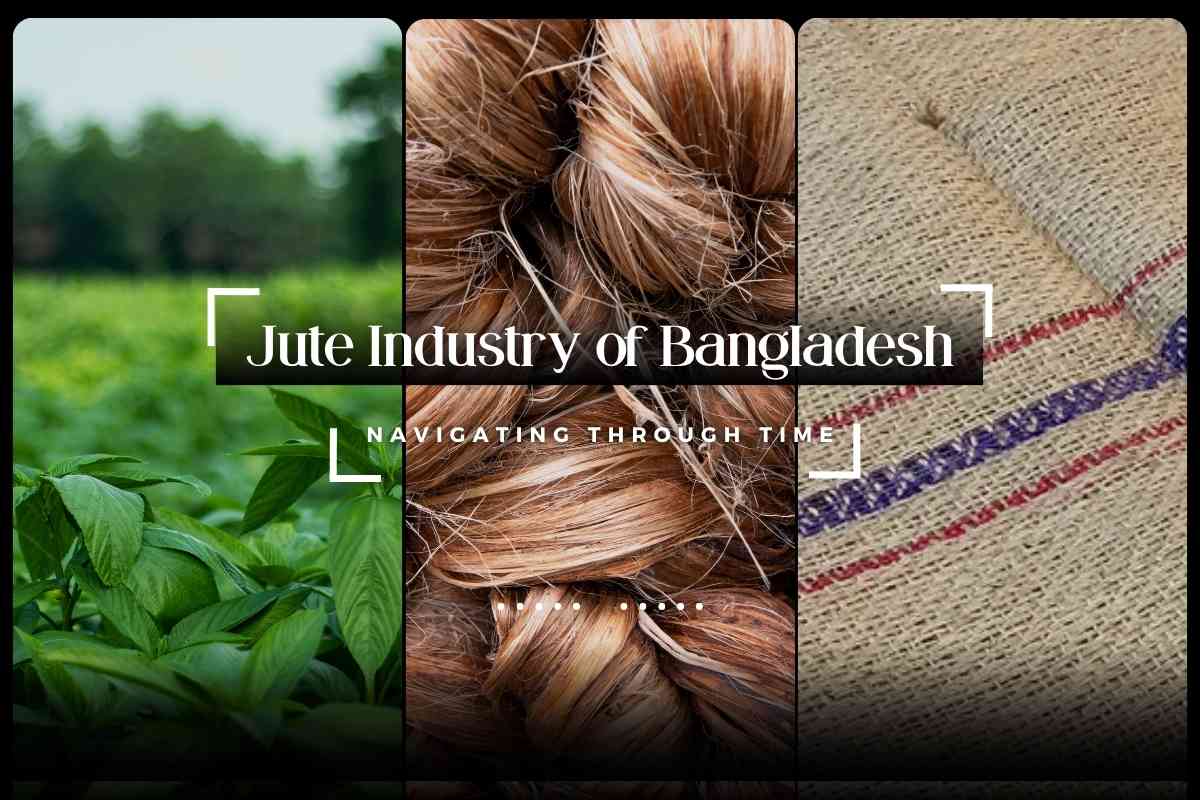Jute’s Beginnings in Bengal: A Fiber’s Genesis
Embark on a journey through the rich history of the Jute Industry in Bangladesh. From its humble beginnings in Bengal, where artisans crafted ropes and clothing, to its pivotal role on the global stage during the Napoleonic Wars, the story of Jute Industry Bangladesh is both fascinating and enduring
Innovations in Jute Production
The mid-19th century witnessed a transformative period for Bengal’s Jute Industry Bangladesh. Faced with a cotton shortage during the American Civil War, British mills turned to resilient jute fiber. Consequently, this led to the establishment of the first jute mill in Rishra, marking a significant milestone in industrializing jute production.
The Flourishing 19th Century: Kolkata’s Jute Hub
By the late 19th century, Kolkata emerged as the nucleus of the Jute Industry Bangladesh. Cultivating a thriving industry, it would soon become the second-largest in British India. However, this success wasn’t without challenges. Tensions over foreign ownership and control permeated the landscape, complicating the narrative.
Jute’s Resilience
Despite challenges, the versatility of jute and its increasing demand, especially during the Crimean War, propelled it into a prominent position within the global economy. The fiber became indispensable, finding applications in diverse products and industries.
Post-colonial Era: Challenges and Transformations
Nationalization and its Consequences
The post-Bangladesh Liberation War era ushered in significant changes for the jute industry. Nationalization under the Bangladesh Jute Mills Corporation aimed to address management issues, yet persistent challenges in terms of financial losses and labor conflicts continued to shape the industry’s trajectory.
Privatization Initiatives
The late 1970s saw efforts to privatize jute mills, an endeavor intended to breathe new life into the industry. However, the closure of major mills, including the iconic Adamjee Jute Mills, marked a turbulent period that underscored the complexities inherent in reshaping Bangladesh’s jute sector.
SA Shamim Jute Mills Ltd.: A Pillar of Tradition and Innovation
Bangladesh’s Weaving Legacy
Nestled in the heart of Bokultola, Bochagonj, Dinajpur, SA Shamim Jute Mills Ltd. stands as a testament to the resilience of Bangladesh’s jute legacy. For over four decades, the mill has been weaving the fabric of success, specializing in the production of premium jute bags, yarn, and twine. Tradition seamlessly intertwines with innovation.
Sustainability at the Core
More than a mere producer of jute products, SA Shamim Jute Mills Ltd. has championed sustainability. The mill’s commitment to eco-friendly practices is not only a nod to environmental consciousness but also a strategic move to secure a greener and more sustainable future.
Contemporary Challenges and Global Dynamics
Adamjee’s Closure and Ongoing Struggles
The closure of Adamjee Jute Mills in 2002 echoed ongoing challenges within the industry. Financial struggles persisted, and dynamic global factors, including anti-dumping tariffs, added layers of complexity, reshaping the very fabric of Bangladesh’s jute landscape.
Renewed Interest in the Private Sector
In the face of these challenges, a renewed interest in jute production emerged within the private sector in Bangladesh. This revival aligns with the global shift towards sustainable and biodegradable alternatives, injecting new vitality into an industry that has been a cornerstone of Bangladesh’s economic identity.
Conclusion: SA Shamim Jute Mills Ltd. and the Jute Narrative Continues
A Custodian of Tradition
As we reflect on Bangladesh’s jute industry, SA Shamim Jute Mills Ltd. emerges not merely as a business entity but as a custodian of tradition. The mill’s commitment to quality, sustainability, and innovation contributes to the ongoing legacy of the Golden Fiber.
Navigating the Modern Era
In the ever-evolving narrative of the jute industry, SA Shamim Jute Mills Ltd. remains a vital player, navigating the complexities of the modern era. The mill’s resilience echoes the enduring spirit of Bangladesh’s jute legacy, ensuring that the Golden Fiber continues to weave its story for generations to come.



